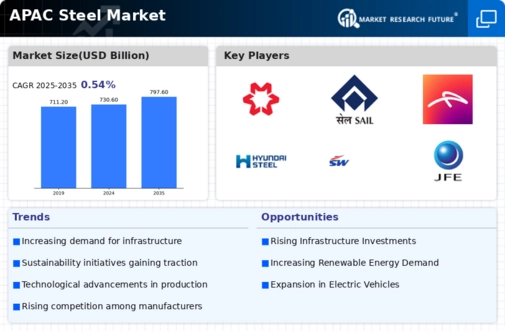The APAC Steel Market is a dynamic and rapidly evolving sector characterized by intense competition and significant growth opportunities driven by infrastructure development, urbanization, and industrialization across various countries in the region. Countries like China, India, Japan, and South Korea play a pivotal role in shaping the market landscape owing to their vast production capabilities and consumption patterns. The competitive insights reveal that players in this market engage in strategic partnerships, technological advancements, and robust supply chain management to enhance their market positions.
Moreover, factors such as government initiatives promoting steel production and sustainability efforts are becoming increasingly crucial in determining competitive advantage in the region. Baowu Steel Group, as one of the leading players in the APAC Steel Market, holds a significant position due to its extensive production capacity and comprehensive range of steel products. The company is recognized for its advanced manufacturing technologies and strong operational efficiency, which contribute to its substantial market share. Baowu Steel Group's competencies in research and development enable it to innovate and introduce high-quality steel solutions tailored to meet the diverse needs of various industries.
Its well-established distribution and logistics network enhances its market penetration, securing its place as a dominant player within the APAC region. Additionally, the company's commitment to sustainable practices and environmental management sets it apart, fostering a reputation for reliability and responsibility in the industry. Metinvest is another notable entity in the APAC Steel Market, distinguished by its vertical integration and comprehensive portfolio of steel products and services. The company strategically operates significant steel mills and mines, ensuring consistent quality and supply chain efficiency.
Metinvest's focus on high-value products, including rolled steel and semi-finished goods, allows it to cater to various sectors such as construction, automotive, and heavy machinery. Its market presence in the APAC region is strengthened by consistent investments in upgrades and technology to enhance production capabilities. Furthermore, Metinvest has been actively involved in mergers and acquisitions to bolster its competitive position, enabling it to expand its product base and strengthen customer relationships. The company's adaptability to market trends and focus on customer-centric solutions have solidified its reputation as a key player in the steel industry within the APAC market landscape.





















Leave a Comment